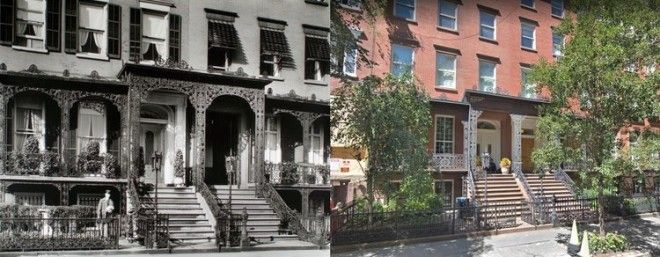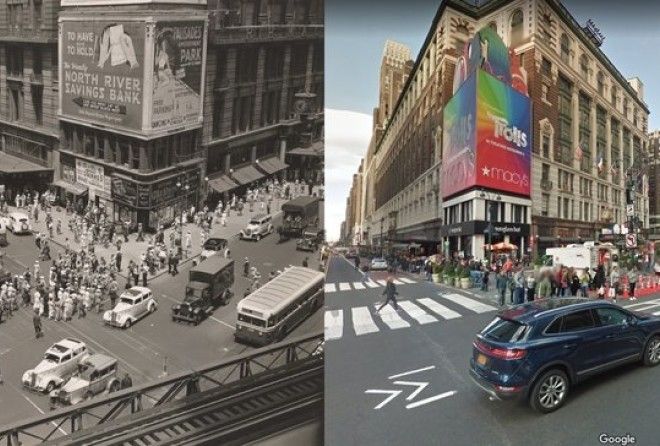Comparing her photos to Google Street View images reveals how the city's public spaces have changed up to today.
The city has "taken older infrastructure that no longer serves its original purpose, and we re-use it for new purposes," Jon Ritter, an urban design and architecture professor at New York University, tells Business Insider. "The bones of the city are still there, but we're good at adapting it for what we want."
Take a look at these transformations below.
In the early 20th century, most of New York's trains tracks were elevated, Ritter says. But by 1950, they were torn down. Here's the Jefferson Market Courthouse in Greenwich Village in 1935 and today.
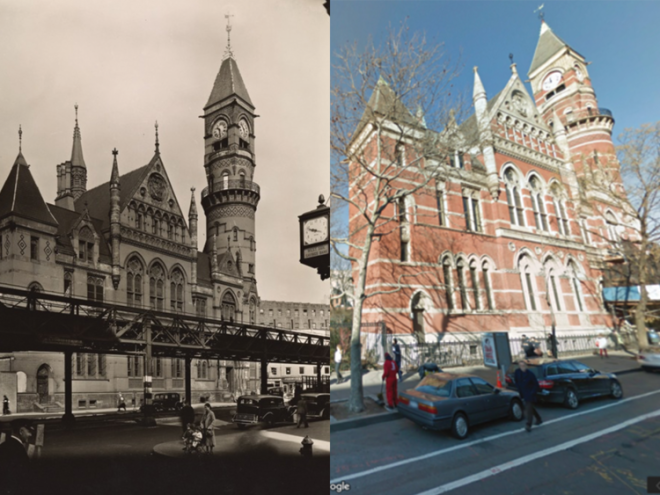
In 1939, the tracks in front of the courthouse migrated underground with the creation of the subway, bringing more light to the street and increasing the value of the nearby real estate.
"It had a huge impact," Ritter says. "The trains were dirty and spewed coal and dirt."
The Gothic Revival-style courthouse was turned into a public library in 1958, because conservationists worried it would be demolished. It's now part of the New York City Landmark Preservation Commission's Greenwich Village Historic District.
Elevated tracks also lived next to the Herald Times building in Herald Square until the early 20th century. Roads occupied a majority of the shopping plaza in 1935, but today, pedestrians hang out in the space.

Under Mayor Michael Bloomberg's administration, the city banned cars to create pedestrian-only plazas in Herald Square in 2009.
One thing that has remained for nearly a century: the many billboards plastered on the side of the mall.
Six lanes of cars dominate 7th Avenue in 1935 —but not so much today.

In 1954, the city re-oriented the avenue to travel southbound one-way. And in 1980, the city narrowed it to make room for a bike lane.
"The streets have always been crowded and continue to be," Ritter says. "But within the last decade, we've started to less of an emphasis on cars and more on bike and pedestrian space to create a landscape in the city."
Like Herald Square, Times Square got its name from The New York Times tower. The photo on the left shows the area's extensive traffic at the time. Today, it's enjoyed mostly by tourists:

In 2009, Bloomberg designated it as a hub only for pedestrians from 46th to 47th streets.
Roads take up 20% of Manhattan, Ritter notes. "That's a huge amount of space to devote to cars."
In both the 1936 and modern-day photos of Union Square, New Yorkers pass through the park.

The square has historically served as a gathering spot for public demonstrations, and the same is true today. Although global brands, like Whole Foods and Forever 21, have since moved into the buildings surrounding the park.
Locals pushing handcarts with fruits and veggies was once common in Nolita, as shown Advertising
in the 1935 photo. The two row homes were probably rented by immigrant families, Ritter says.
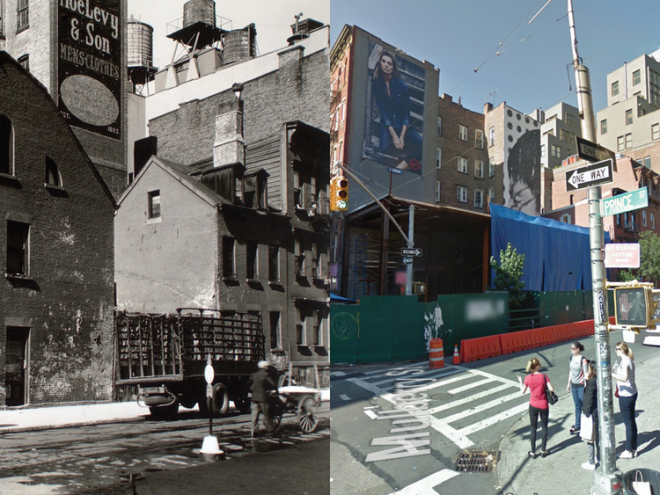
Today, these streets feature larger shops that attract tourists from all over. Historically, there was more of an emphasis on local industry and manufacturing, Ritter says.
Mori, an Italian restaurant, served patrons on Bleecker Street for 54 years. It went bankrupt during the Great Depression two years after Abbott took the photo on the left. Today, the building is a Duane Reade pharmacy and a stationery store:
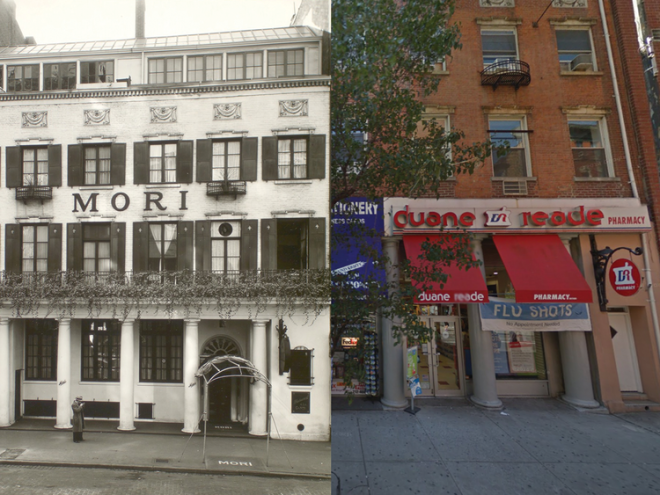
The building has had multiple purposes in its lifetime, including a meeting spot for political activists, a NYU classroom building, and a 200-seat cinema.
That district, in West Village, is protected by the New York City Landmark Preservation Commission. If businesses want to make drastic renovations, they need to pay for permits, which is why many of the buildings still have historical characteristics (e.g. the white columns in the photo above).
"New York City has built over itself every chance it gets," Ritter says. "Preservation is a way to negotiate against those impulses."
Over the years, West Village's businesses have upgraded the buildings with modern technology, like the AC box on the second floor in the recent photo.
Washington Square looked remarkably similar in 1935 compared to today, also thanks to historic preservation laws.
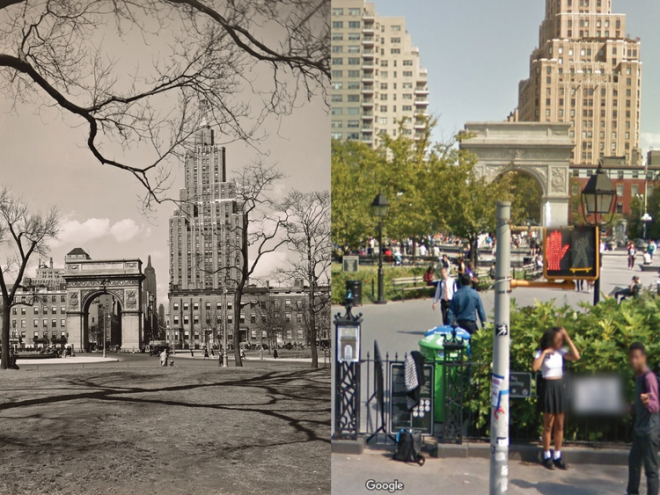
There's only one difference. A few of the buildings to the left of the arch were demolished and then re-built in the late '50s to early '60s, Ritter says.
The apartments surrounding the arch were also declared one of the city's first historic sites in the mid-19th century.
"It represents the way the gentry is nostalgic for the first buildings built in the city, which will never change," Ritter says. "They're a part of New York's historic fabric."
